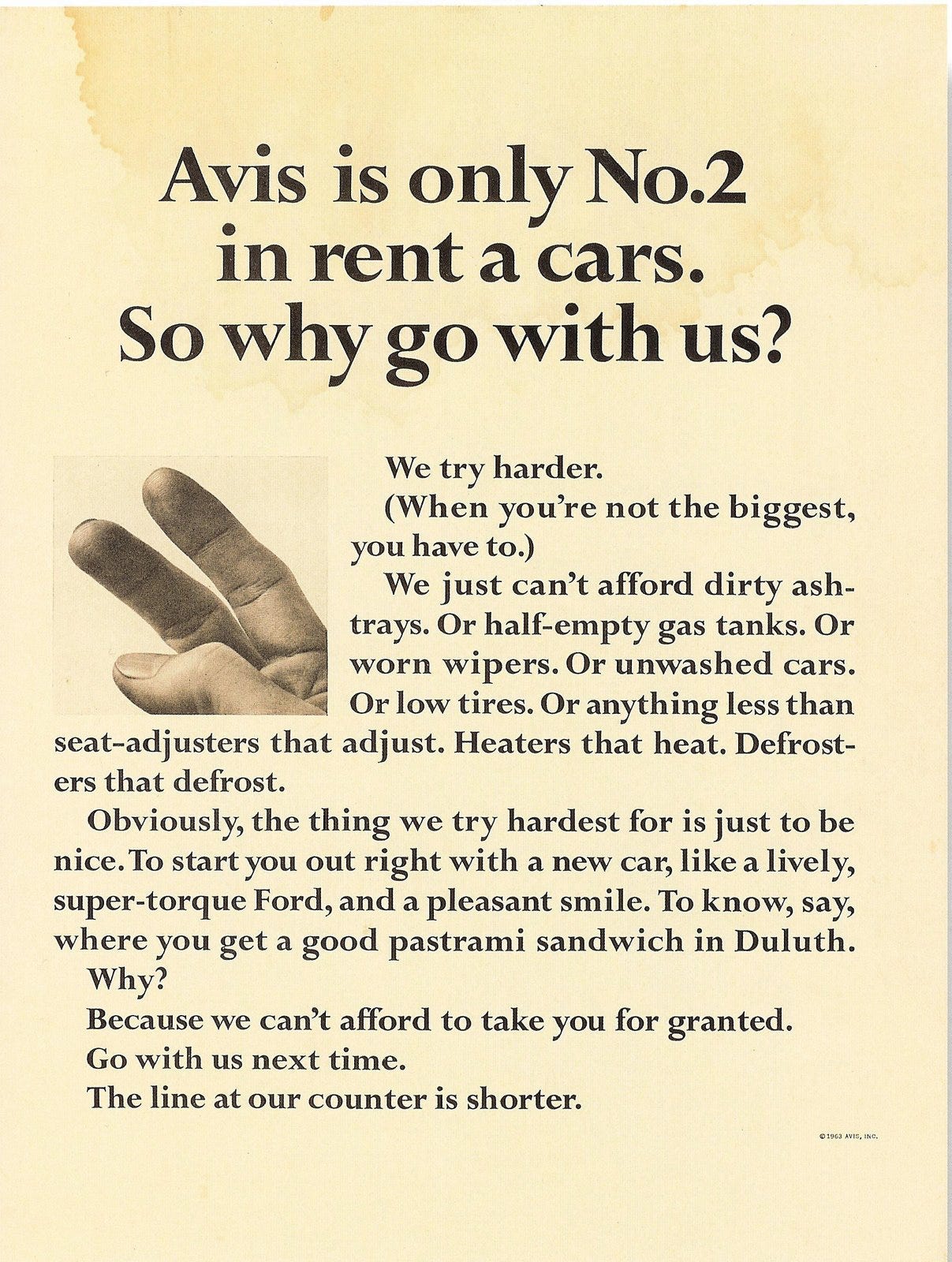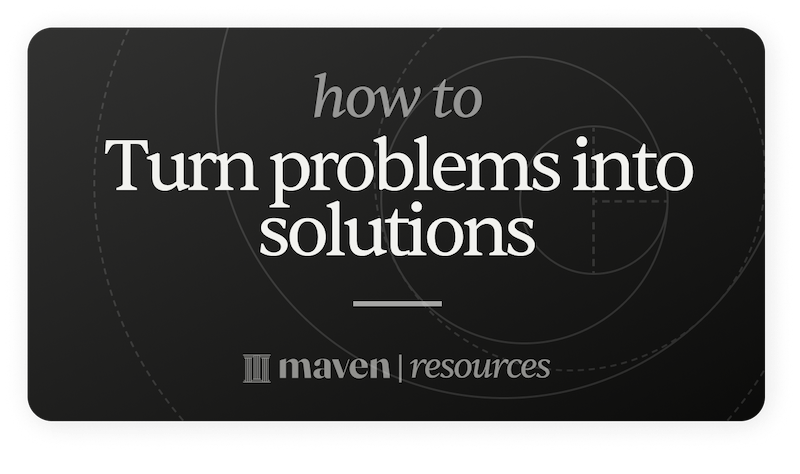Marketers are often put in a tight spot:
CEO: "Our product is launching! Can you get people to buy?”
You: “Umm I wish you had looped me in earlier. If it had x or y feature, it would be a lot easier to market.”
But it’s too late to change the product… So what do you do?
Turn bugs into features.
In engineering, a bug is an error or defect. The inside joke is engineers will claim a bug is actually a feature. That’s often not true with software. But in marketing, we actually CAN turn bugs into features.
The best marketers and brands do this regularly. The things you thought were errors, constraints, or liabilities can actually become selling points.
How do you turn a bug into a feature? Own the narrative. Frame your decision as an intentional choice.
For example, in the 1960s, Avis was the #2 car rental brand and Hertz, their competitor, was #1. Back then, it was blasphemy to market anything but being first in your category.
But Avis turned the fact that they were #2 from a bug into a feature. They messaged that #1 brands don’t try as hard. But because Avis was #2, they’d go the extra mile for you. This caught customers’ attention and built trust in Avis.

There are many opportunities to turn bugs into features in work, life, and your online course:
Example 1:
🚫 Bug: "This product is too basic. It doesn't offer enough features."
✅ Feature: "We do one thing and one thing only: Help you get X done.”
—
Example 2:
🚫 Bug: "These ceramics suck because there are major quality control issues..."
✅ Feature: "These ceramics are hand-made, so each piece is unique and will have minor differences."
—
Example 3:
🚫 Bug: “I can’t create a course. I have no teaching experience and don’t know where to start.”
✅ Feature: “I may not have teaching experience, but I have loads of experience in X topic. Teaching can be learned, but I’ve earned my track record and credibility!”
—
Example 4:
🚫 Bug: “Ugh. Building an entire course is a lot of work. So many slides to make!”
✅ Feature: “My potential students are busy professionals who don’t want to take a 6+ week course. I’ll build a 1 week course and make it super interactive with fewer slides.”
—
When you feel frustrated by the product or course you have to market, think about how you can turn a bug into a feature.
By the way, this totally works when the product is yourself.
For example, I used to think being an introvert was a bug. But when I challenged myself to turn a bug into a feature, I realized being introverted has contributed to my success all along–it allowed me to bring a different POV in a world full of extroverts.
The goal is to see your product–or yourself–with fresh eyes. Features that you thought were initially bad might end up being what you emphasize.
To apply this framework, ask yourself:
1. What do you think you have to hide?
2. Is it something you can emphasize instead?
When you have a constraint, don’t automatically look to downplay it. Lean into it, and turn a bug into a feature.
PS When you’re building something new, it’s helpful to have a place to bounce ideas and get unstuck. That’s why we built the
Maven Course Accelerator. It’s a free, 3-week program so you can get feedback from Maven experts and fellow builders. When you start earning on Maven, you keep 90% of your course revenue minus Stripe fees.







